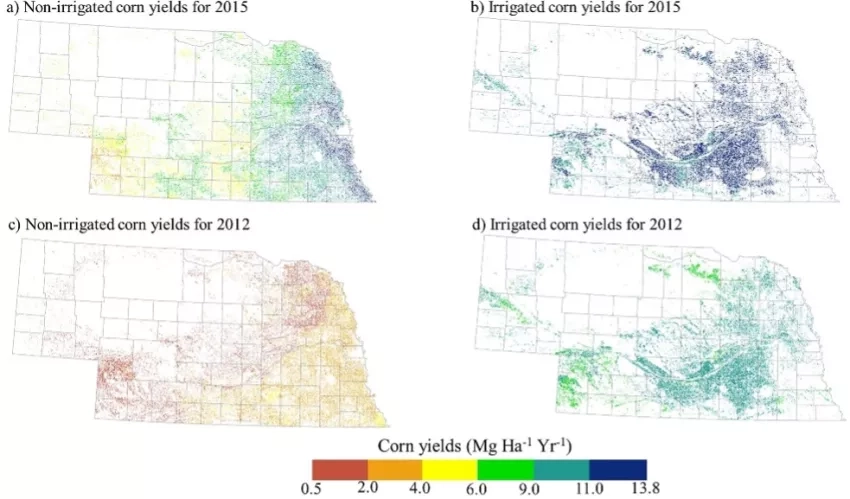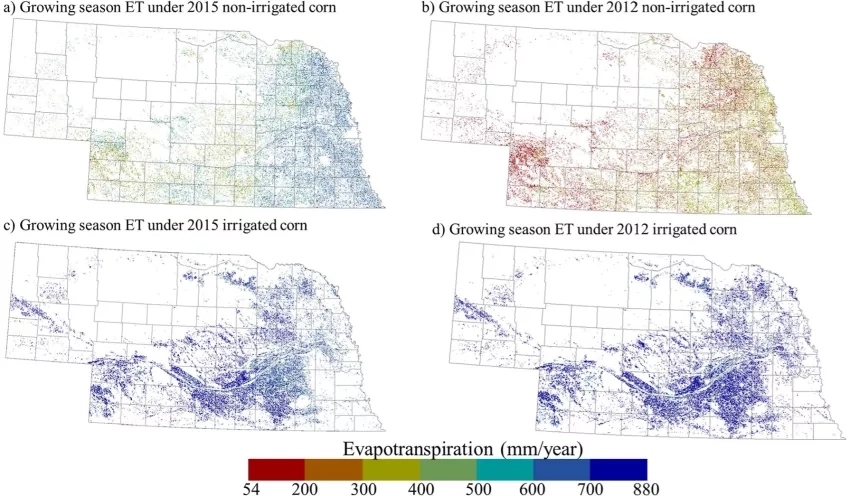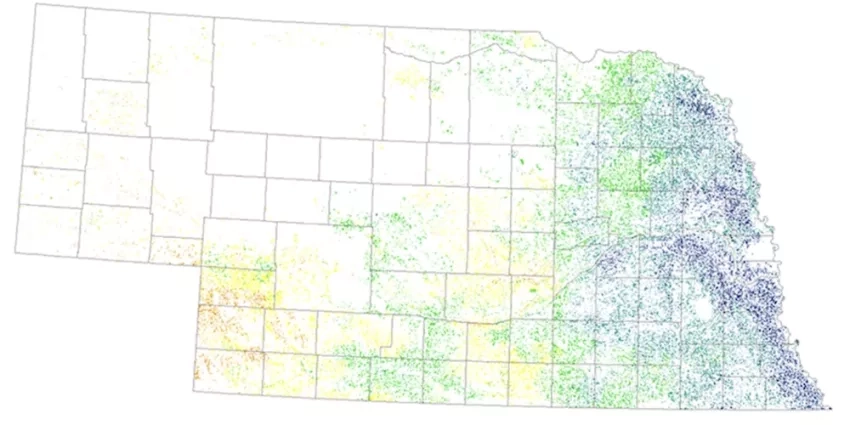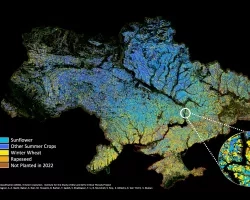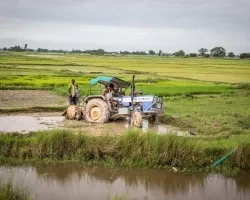A new modeling framework for assessing water use and estimating crop yields at the regional level is now available. Called GEO-CropSim, it integrates Earth observations into process-based crop models, so decision-makers can monitor and improve crop production while simultaneously analyzing water consumption.
GEO-CropSim is a product created by NASA Harvest, in partnership with the U. S. Department of Agriculture (USDA) Agricultural Research Service. This hybrid method of modeling uses satellite imagery, climate data, and farm management information. With the rise in the number of food insecure populations around the world and increasing pressure on limited water resources, resources like GEO-CropSim are vital to identify areas with struggling production while improving management techniques to increase crop yields and better use resources like water.
Designed by a group of researchers at the University of Maryland’s Department of Geography and the USDA’s Agricultural Research Center, the model uses a combination of biophysical and meteorological input data to estimate crop yields. This gives advanced warning of low potential yields and allows farmers and policymakers to evaluate the effectiveness of different management strategies.
Estimating yield also assists in crop insurance, land rental agreements, market stabilization, and informing agricultural policies. GEO-CropSim also allows researchers to study the evapotranspiration (ET) rate of croplands. ET is the rate of transfer of water vapor between the ground and the atmosphere and includes evaporation of water from the soil and through plant transpiration. It provides a useful measure of the total consumption of water within cropland - thus allowing for analysis of the efficiency of water use.
Being a hybrid-type of crop yield model, GEO-CropSim uses climate, soil, and management decisions while filling in data gaps with satellite imagery that has high spatial and temporal resolution. This combines two common methods of yield estimation.
One is a process-based model which combines climate and soil data with management decisions, such as irrigation and fertilizer application, to simulate crop growth in a series of timesteps. Process based models can be very accurate when input data is available but suffer from an unfortunately common lack of data at the necessary scales. The other is a remote-sensing model. This monitors crops from space and the data is then used to estimate different crop characteristics like leaf area index, land surface temperature, or water content within leaves. These characteristics are then extrapolated to predict overall crop condition and future yield. Remote sensing-based models limit labor costs, have lots of available data and can be very useful when correctly calibrated. However, as these models are trained within specific climate, crop, and environmental conditions, they tend to suffer transferability issues in areas that are different from their training location.
As a combination of the two, GEO-CropSim is based on a widely used process-based model that has seen a lot of success in crop yield estimation over the years. The model, Environmental Policy Integrated Climate (EPIC) crop simulation uses farmer decision data like irrigation and fertilizer application along with soils and climate data. Two important climate data inputs for EPIC are leaf area index and crop emergence dates. The leaf area index is a measure of the size, or area, of the leaves of a plant and is an important indicator of the condition and future potential yield of a crop. Crop emergence dates refers to the timeline of when planted crops first sprout and the rate at which they grow. This is also useful for understanding the health of crops and their likely size at harvest.
GEO-CropSim expands on the EPIC model by using remote sensing data for both the leaf area index and crop emergency dates. The team tested GEO-CropSim at three locations in Nebraska for both maize and soybean fields. Further, the team wanted to evaluate how the model would work in different growing conditions, so they used data from one drought year (2012) and a non-drought year (2015). After modeling predicted yields for the state in both years, the estimates were compared to historical yield data and ET observations from the USDA’s National Agricultural Statistics Service (NASS). GEO-CropSim was found to produce a higher “granularity” or more specific results across the study sites than the original EPIC model.
GEO-CropSim represents the combining of process and remote sensing-based crop yield models and brings benefits of both to researchers, farmers, and policymakers. With ever growing food insecurity, the need for more reliable crop yield models is only increasing.
Additionally, as access to water becomes more scarce and variable due to climate change, efficient use of water in agriculture is necessary to ensure future access to this vital resource remains available. GEO-CropSim is an effective tool for both of these purposes and can find much use for those invested in a food secure future.
More details about this work is available at the NASA Harvest story, NASA Harvest And USDA Release Water Use And Crop Yield Simulator.
The original study from the team at the University of Maryland and USDA can be read at the journal article titled, "Geo-CropSim: A Geo-spatial crop simulation modeling framework for regional scale crop yield and water use assessment."

